Description
The instruction for medical use of Medotsef Torgovoye medicine a name Medotsef Mezhdunarodnoye the unlicensed name Tsefoperazon Lekarstvennaya a form Powder for preparation of solution for injections, 1 g Structure One bottle contains active agent – tsefoperazon sodium the Description White or slightly yellow, hygroscopic powder Pharmacotherapeutic group Beta laktamnye antibacterial drugs is equivalent to a tsefoperazon of 1.0 g. Other drugs. Cephalosporins of the third generation. Tsefoperazon. The ATX J01DD12 code the Pharmacological Pharmacokinetics Maximum Concentration properties of a tsefoperazon after intravenous administration of drug in a dose of 1 g within 5 min. averages 236.8 mkg/ml. The volume of distribution of a tsefoperazon is from 10.2 l to 11.3 l. Communication with proteins of blood plasma of 82-93%. Tmax (time of achievement of the maximum concentration) after intramuscular introduction (in m) 1-2 hours, after intravenous administration (in c) – at the end of infusion. Cmax (maximum plasma concentration) later in m of introduction of 1 g and 2 g of drug of 65-75 mkg ml and 97 mkg ml respectively, after 1 g, single in in introductions, 2 g, 3 g and 4 g of Cmax of-153 mkg ml, 252 mkg ml, 340 mkg ml and 506 mkg ml respectively. Cmax in urine in m and in in introductions of 2 g makes later 1 mg ml and 2.2 mg ml respectively. Tsefoperazon well gets through a blood-brain barrier. Secretion of drug in breast milk is insignificant. Reaches therapeutic concentration in peritoneal, ascitic and spinal (in meningitis) liquids, in urine, a gall bladder, bile, lungs, a phlegm, palatal tonsils and a mucous membrane of sine, a cardiac muscle, urinary tract, a prostate. The volume of distribution is 0.14-2 l kg. Elimination half-life (T1/2) of a tsefoperazon makes from 1.6 to 2.4 hours. T1/2 increases by 2-4 times in an abnormal liver function, till 4.3 – 11 o’clock in case of impassability of bilious ways, elimination half-life at newborn children makes 6.9 hours, and children from 2 months to 11 years have 2.2 hours. It is removed with bile – 70-80%, kidneys – 20-30% in not changed look. Serumal concentration is proportional to the entered dose. At patients with a renal liver failure drug can kumulirovat. A pharmacodynamics Medotsef – semi-synthetic tsefalosporinovy antibacterial drug III of generation of a broad spectrum of activity. Affects bakteritsidno sensitive microorganisms during their active reproduction, by oppression of biosynthesis of a mukopeptid of a cell wall. Medotsef is active in vitro concerning a wide range of clinically significant microorganisms. Gram-positive microorganisms: Staphylococcus aureus which is producing and not producing penicillinase, Staphylococcus epidermidis, Streptococcus pneumoniae, Streptococcus pyogenes (beta and hemolytic streptococcus of group A), Streptococcus agalactiae (beta and hemolytic streptococcus of group B), the majority of other strains of beta and hemolytic streptococci, many strains of Streptococcus faecalis (enterokokk). Gram-negative microorganisms: Escherichia coli, Klebsiella spp., Enterobacter spp., Citrobacter spp., Haemophilus influenzae, Proteus mirabilis, Proteus vulgaris, Morganella morganii (old name Proteus morganii), Providencia rettgeri (old name Proteus rettgeri), Serratia spp. (including S.marcescens), Pseudomonas aeruginosa and some other Pseudomonas spp., Acinetobacter calcoaceticus, Neisseria gonorrhoeae, Neisseria meningitidis. Anaerobic microorganisms: gram-negative sticks (including Bacteroides fragilis, other Bacteroides spp.), gram-positive and gram-negative cocci (including Peptococcus, Peptostreptococcus species), gram-positive sticks (including Clostridium spp). It is steady in relation to the majority plasmid beta laktamaz gram-positive and gram-negative bacteria. Indications Medotsef is shown for treatment of the infections caused by activators, sensitive to a tsefoperazon: – an infection of upper and lower parts of airways – infections of upper and lower parts of urinary tract – intraabdominal infections (including peritonitis, cholecystitis, a cholangitis) – sepsis – meningitis – infections of skin and soft tissues – infections of bones and joints – inflammatory diseases of bodies of a small pelvis and an urinogenital system – an endometritis – gonorrhea the Route of administration and doses Medotsef is applied intravenously (by drop infusion, struyno) and intramusculary. Treatment can be begun before obtaining results of a research of sensitivity of microorganisms. Use for adults: Medotsef is recommended to apply to treatment of the majority of infections in a daily dose 2-4 g. The daily dose should be divided into equal parts and to enter each 12 h within 7 days. The maximum single dose for adult 2 g. At a heavy course of infections, the daily dose can be increased from 6 g to 12 g. The chosen dosage needs to be divided into 2 – 4 equal doses and to enter intravenously within 7 – 14 days. At intravenous jet administration the maximum single dose for adults – 2 g, drug it is necessary to dissolve in the corresponding solvent to final concentration 100 mg/ml and to enter not less than 3-5 minutes. In an uncomplicated gonococcal urethritis the one-time intramuscular introduction of 500 mg (in oil) of drug is recommended. For prevention of postoperative complications Medotsef enter intravenously (in / c) on 1-2 g in 30–90 min. prior to operation. The dose can be repeated in each 12 h, however, in most cases during no more than 24 h. At operations with the increased risk of infection (for example, operations in colorectal area) or if the arisen infection is especially life-threatening (for example, at open-heart surgeries or prosthetics of joints), preventive use of Medotsef can be continued during 72 h after completion of operation. Use for children: the daily dose of Medotsef for children makes 50-200¼ú/kg body weights which are entered by equal parts in two steps (in each 12 h) or more if necessary. At in in jet introduction the maximum single dose for children makes 50 mg/kg of weight, introduction duration – not less than 3-5 min. The newborn (& lt, 8 days) 50-200 mg/kg of body weight a day equal parts in each 12 h enter. At newborns and children with heavy infections, including bacterial meningitis, daily doses up to 300 mg/kg of body weight were applied without complications. Use for elderly patients For elderly patients dose adjustment is not required. Use for patients with an abnormal liver function At patients with an obturation of bile ducts, a liver failure it is necessary to conduct monitoring of concentration of drug in blood, and in case of need to adjust a dose. If control of concentration of drug is not carried out, the applied dose should not exceed 2 g a day. Use for patients with a renal failure with a renal failure dose adjustment is not required From patients. Elimination half-life of a tsefoperazon from blood serum decreases a little during a hemodialysis therefore administration of drug needs to be planned after the procedure of dialysis. Ways of cultivation: for intramuscular introduction the two-stage process of cultivation of drug is recommended. To strike slightly the bottle basis to stir up powder which perhaps accumulated in storage time. To add necessary amount of sterile water for injections (see the table) and to stir up carefully, before full dissolution of drug. In the course of stirring of a bottle in solution small bubbles appear before continuing drug cultivation process, it is necessary to check that these bubbles were dissolved then to add the necessary number of 2% of solution of lidocaine (see the table) and to mix solution. The drug is administered intramusculary deeply in a big gluteus or in the front surface of a hip. Bottle Stage 1 Amount of sterile water Stage 2 number of 2% lidocaine Volume of ready solution Final concentration of a tsefoperazon of 1 grams 2.8 ml 1.0 ml 4.0 ml 250 mg/ml 2 grams 5.4 ml 1.8 ml 8.0 ml 250mg/ml Intravenous administration: for preparation of initial solution for intravenous administration, it is necessary to add 5 ml of any of the following solutions on 1 g of Medotsef: 5% solution of a dextrose (D-glucose) for injections, 5% solution of a dextrose (D-glucose) and 0.9% or 2% sodium chloride solution for injections, 10%-solution of a dextrose (D-glucose) for injections, 0.9% sodium chloride solution for injections. Sterile water for injections cannot be used as solvent for intravenous infusions. Carry out cultivation of drug according to the instructions described in the section “intramuscular introduction”. Ready solution needs to be extracted for further cultivation and introduction, using for intravenous infusion of any of the solutions stated above. For implementation of fractional infusion the restored solution needs to be dissolved in addition at the rate of 20 ml – 40 ml of solvent on 1 gram of Medotsef and to enter to the patient within 15 – 30 minutes. For implementation of long continuous infusion the restored solution needs to be dissolved in addition before use to final concentration of a tsefoperazon 2 – 25 mg/ml. Side effects often (≥1/100, & lt, 1/10) – nausea, vomiting, diarrhea infrequently (≥1/1000, & lt, 1/100) – rash, an itching, urticaria – the feeling of pain and emergence of irritation in the injection site of drug is rare (≥1/10000, & lt, 1/1000) pseudomembranous colitis, passing increase in indicators of function of a liver – nuclear heating plant, ALT, SF, bilirubin in blood serum, cholestatic jaundice, hepatitis – a headache, fever, pains at an injection, a fever, a vasculitis very seldom (& lt, 1/10000) – an acute anaphylaxis, a Quincke’s edema – Stephens-Johnson’s syndrome – a reversible neutropenia (at long-term treatment), decrease in level of hemoglobin and a hematocrit, a passing eosinophilia, a leukopenia, thrombocytopenia, a prothrombinopenia, in some cases – positive test of Koombs – a hamaturia – kandidamikotichesky sepsis of the Contraindication – hypersensitivity to a beta laktamnym to antibiotics – hypersensitivity to lidocaine or other local anesthetic of amide type (for the solution containing lidocaine at intramuscular introduction of a tsefoperazon) – intracardial blockade without the established pacemaker – heavy heart failure – a heavy renal and liver failure – pregnancy and the period of a lactation Medicinal interactions Medotsef is absolutely incompatible: with aminoglikozidny antibacterial drugs (nephrotoxic effect), amifostiny, filgrastimy, labetaloly, Meperidinum, nikadipiny, ondansetrony, Perfenazinum, pethidine, promethazine, sargramostiny, vinorelbiny. Parallel appointment of Medotsef with anticoagulants, derivative coumarin or an indandion, heparin or thrombolytic means can lead to increase in risk of bleeding. Such treatment has to be controlled carefully, it is also necessary to control coefficient of a prothrombin time. For maintenance of necessary level of anti-coagulation during a course of treatment tsefoperazony and after its termination the correction of a dose of anti-coagulative therapy can be required. The combination of tsefalosporinovy antibacterial agents and loopback diuretics is the reason of nephrotoxicity. It is necessary to avoid combinational prescribing of such drugs to patients with diseases of kidneys. At combined use of Medotsef and alcohol there can be a disulfiramopodobny reaction. Patients during a course of treatment tsefoperazony and also within 72 hours after the termination of a course of treatment have to avoid both consumption of alcoholic drinks, and the medicines containing alcohol including drugs of parenteral administration in which alcohol is used as preservative. Patients should appoint the special instructions Medotsef with care with digestive tract diseases, especially, at which the colitis phenomena since at use of cephalosporins the pseudomembranous colitis can develop are observed. At treatment by Medotsef the deficiency of vitamin K in rare instances developed. Probably suppression of normal intestinal microflora which synthesizes this vitamin is its reason. It is possible to carry the patients receiving poor nutrition, patients with malabsorption to risk group (for example a mucoviscidosis), alcoholism and it is long being on intravenous artificial nutrition. In such cases and also at the patients receiving anticoagulants it is necessary to control a prothrombin time and in the presence of indications to appoint vitamin K. Medotsef’s use for newborns with jaundice can increase risk of developing bilirubinovy encephalopathy. When using in the test of solution of Benedict or Felinga against the background of use of drug the false positive reaction to glucose in urine can be observed. When conducting direct antiglobulinovy test, during treatment by Medotsef, positive forward reaction of Koombs is possible. In cases of an obturation of bile ducts, a serious illness of a liver or the accompanying renal failure there can be a need for change of the mode of dosing. Features of influence on ability to run the vehicle or potentially dangerous mechanisms Considering possible side reactions, such as headache, nausea it is necessary to be careful when driving and other mechanisms requiring special attention. Overdose Symptoms: strengthening of side effects, neurologic disturbances, including spasms. Treatment: symptomatic therapy, tsefoperazon is removed from blood at a hemodialysis. The form of release and packing place Drug (corresponding 1.0 g of a tsefoperazon) in the glass bottles closed by rubber bungs with aluminum caps. On bottles self-adhesive paste labels. On 100 bottles together with the instruction for medical use in the state and Russian languages place in a pack from cardboard. To Store storage conditions in original packing, in the dry, protected from light place, at a temperature not above 25 °C. To store out of children’s reach. A period of storage 2 years not to use drug after expiry date Prescription status According to the prescription Medokemi Ltd Producer, CYPRUS of Constantinoupoleos Street, 3011, Limassol, Cyprus tel.00352725867600, fax.0035725560863 the Packer and the owner of the registration certificate of Medokemi Ltd, CYPRUS the Address of the organization accepting in the territory of the Republic of Kazakhstan claims from consumers on quality of products (goods): Representative office of Medokemi Ltd in Republic of Kazakhstan Almaty, Mukanov St., 241 office 1B ph. / fax: 313-73-76 E-mail:
To Develop medochemie@mail.ru
Additional information
| Ingredient |
|---|





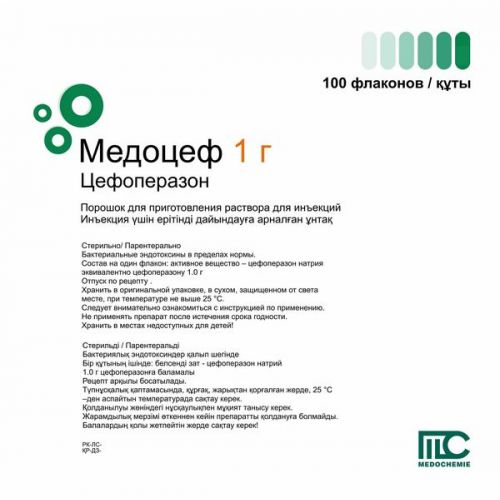
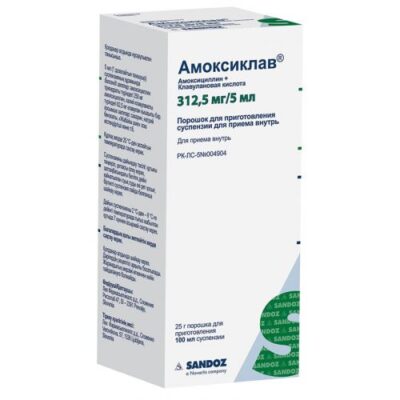
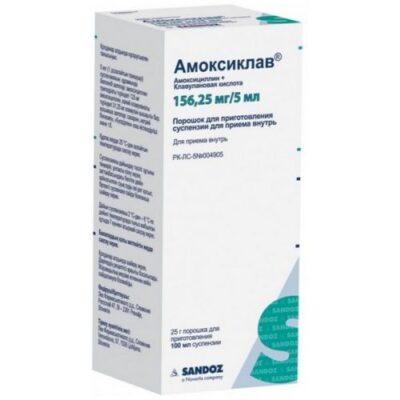
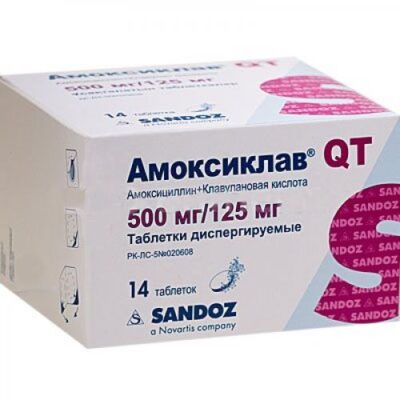
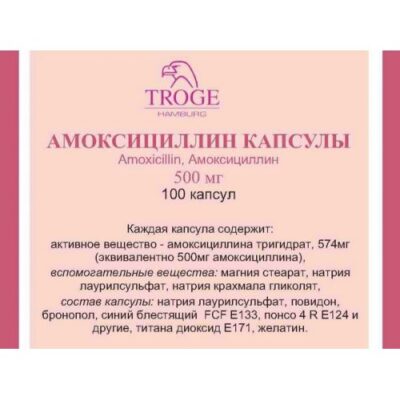
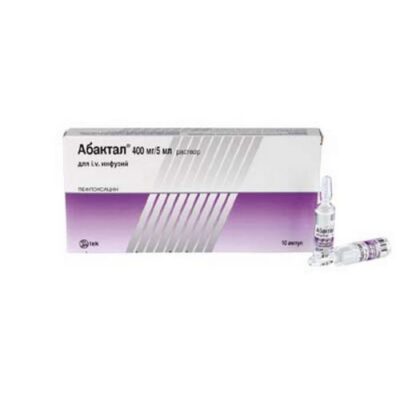
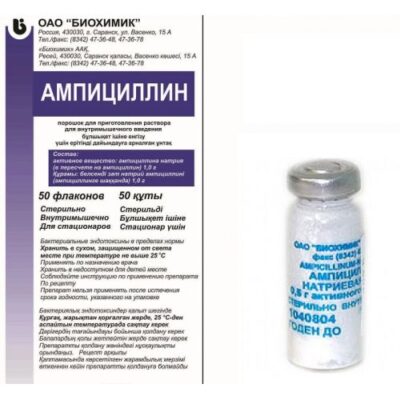
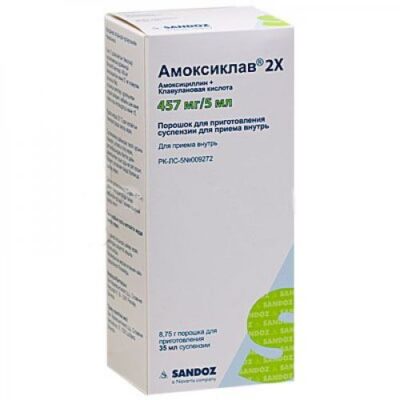
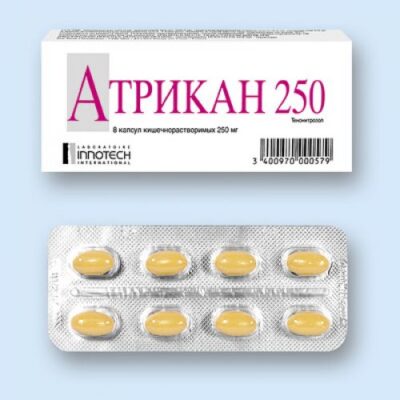
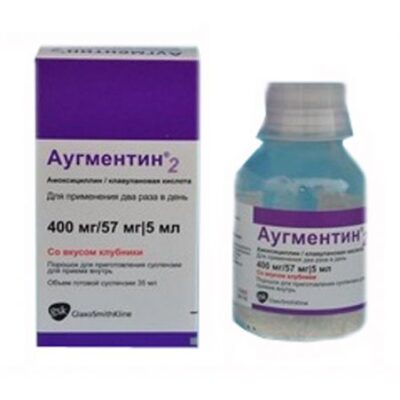
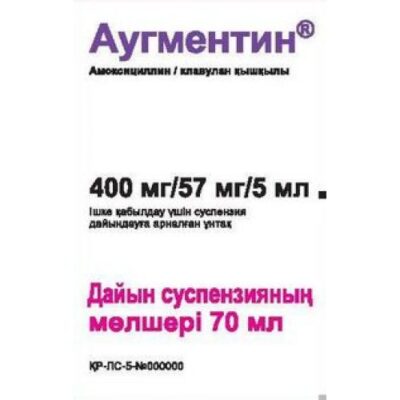






Reviews
There are no reviews yet.